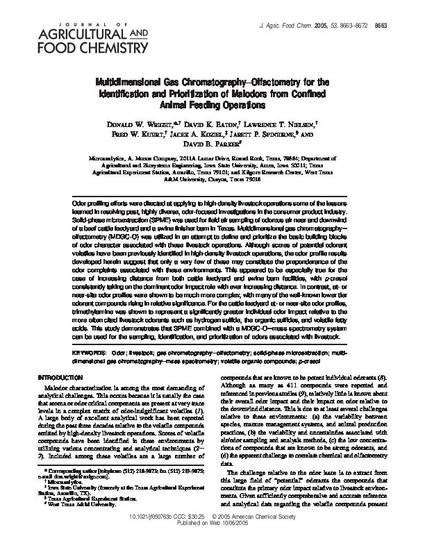
Odor profiling efforts were directed at applying to high-density livestock operations some of the lessons learned in resolving past, highly diverse, odor-focused investigations in the consumer product industry. Solid-phase microextraction (SPME) was used for field air sampling of odorous air near and downwind of a beef cattle feedyard and a swine finisher barn in Texas. Multidimensional gas chromatography−olfactometry (MDGC-O) was utilized in an attempt to define and prioritize the basic building blocks of odor character associated with these livestock operations. Although scores of potential odorant volatiles have been previously identified in high-density livestock operations, the odor profile results developed herein suggest that only a very few of these may constitute the preponderance of the odor complaints associated with these environments. This appeared to be especially true for the case of increasing distance from both cattle feedyard and swine barn facilities, with p-cresol consistently taking on the dominant odor impact role with ever increasing distance. In contrast, at- or near-site odor profiles were shown to be much more complex, with many of the well-known lower tier odorant compounds rising in relative significance. For the cattle feedyard at- or near-site odor profiles, trimethylamine was shown to represent a significantly greater individual odor impact relative to the more often cited livestock odorants such as hydrogen sulfide, the organic sulfides, and volatile fatty acids. This study demonstrates that SPME combined with a MDGC-O−mass spectrometry system can be used for the sampling, identification, and prioritization of odors associated with livestock.
Available at: http://works.bepress.com/jacek_koziel/64/

This article is from Journal of Agricultural and Food Chemistry 52, no. 22 (2005): 8663–8672, DOI: 10.1021/jf050763b.